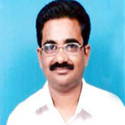
P.V. Subbaiah
Work place: V. R. Siddhartha Engineering College, Vijayawada, 520001, India
E-mail: pvsubbaiah@vrsiddhartha.ac.in
Website:
Research Interests: Computational Science and Engineering, Computational Engineering, Engineering
Biography
Dr. P. V Subbaiah was graduated in ECE from Bangalore University and received his Master’s Degree from Andhra University, Visakhapatnam in 1982. JNTU, Hyderabad has conferred Ph.D degree on P.V. Subbaiah for his work on Microwave Antenna Test Facilities in the year 1996. He has vast teaching experience of 33 years in different reputed Institutions as Assistant Professor, Associate Professor, Professor and Head of the Department and Principal. Presently he is the Professor of ECE at V.R. Siddhartha Engineering College, Vijayawada and discharging his duty as the Coordinator of World Bank funded TEQIP Project since 2014. His areas of interest include Microwave Antennas, Smart Antennas and Communications. He has published more than 100 research papers in National and International Journals and Conferences of repute. Ten research scholars have received their Ph.D degree under his supervision and presently guiding three more scholars for their Ph D. He is the Member and Fellow of various professional societies namely ISTE, BMESI, IETE and IE (I). He was recipient of Sir Thomas ward Gold Prize from The Institution of Engineers (India).
Author Articles
Performance Analysis of Statistical Approaches and NMF Approaches for Speech Enhancement
By Ravi Kumar Kandagatla P.V. Subbaiah
DOI: https://doi.org/10.5815/ijigsp.2019.07.02, Pub. Date: 8 Jul. 2019
Super-Gaussian Based Bayesian Estimators plays significant role in noise reduction. However, the traditional Bayesian Estimators process only DFT spectral amplitude of noisy speech and the phase is left unprocessed. While deriving Bayesian estimators, consideration of phase information provides improved results. The main objective of this paper is twofold. Firstly, the Super-Gaussian based Complex speech coefficients given Uncertain Phase (CUP) based Bayesian estimators are compared under different noise conditions like White noise, Babble noise, Pink noise, Modulated Pink noise, Factory noise, Car noise, Street noise, F16 noise and M109 noise. Secondly, a novel speech enhancement method is proposed by combining CUP estimators with different NMF approaches and online bases updation. The statistical estimators show less effective results under completely non-stationary assumptions. Non-negative Matrix Factorization (NMF) based algorithms show better performance for non stationary noises. The drawback of NMF is, it requires training and/or requires clean speech and noise signals. This drawback can be overcome by taking the advantages of both statistical approaches and NMF approaches. Such approaches like Posteriori Regularized NMF (PR-NMF), Weibull Rayleigh NMF (WR-NMF), Nakagami Rayleigh (NR-NMF), CUP estimator with Gamma and Generalized Gamma distributions + NMF + Online bases Update (CUP-GG + NMF + OU) and CUP-GG + WR-NMF / NR-NMF + OU are considered for comparison. The objective of this paper is to analyze the performance of speech enhancement methods using Bayesian estimators, NMF approaches, Combination of statistical and NMF approaches. The objective performance measures Perceptual Evaluation of Speech Quality (PESQ), Short-Time Objective Intelligibility (STOI), Signal to Noise Ratio (SNR), Signal to Distortion Ratio (SDR), Segmental SNR (Seg SNR) are considered for comparison.
[...] Read more.A Survey on Speech Enhancement Methodologies
By Ravi Kumar. K P.V. Subbaiah
DOI: https://doi.org/10.5815/ijisa.2016.12.05, Pub. Date: 8 Dec. 2016
Speech enhancement is a technique which processes the noisy speech signal. The aim of speech enhancement is to improve the perceived quality of speech and/or to improve its intelligibility. Due to its vast applications in mobile telephony, VOIP, hearing aids, Skype and speaker recognition, the challenges in speech enhancement have grown over the years. It is more challenging to suppress back ground noise that effects human communication in noisy environments like airports, road works, traffic, and cars. The objective of this survey paper is to outline the single channel speech enhancement methodologies used for enhancing the speech signal which is corrupted with additive background noise and also discuss the challenges and opportunities of single channel speech enhancement. This paper mainly focuses on transform domain techniques and supervised (NMF, HMM) speech enhancement techniques. This paper gives frame work for developments in speech enhancement methodologies.
[...] Read more.Other Articles
Subscribe to receive issue release notifications and newsletters from MECS Press journals